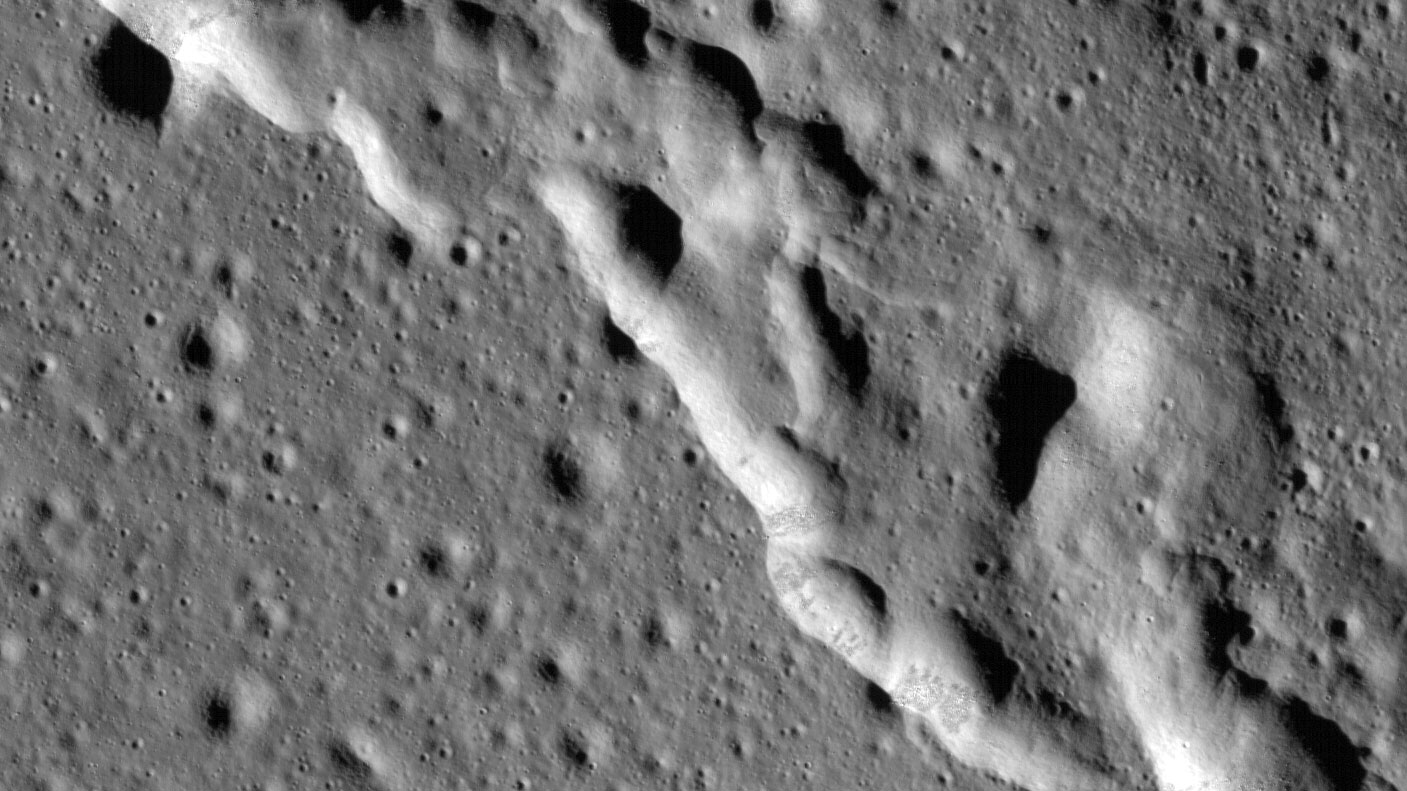In This Week’s Star
- Center Director Jody Singer Updates Team Members Following Agencywide Town Hall Focused on NASA’s Updated Moon 2024 Plan
- NASA Leaders Visit Louisiana State Capital, Share Moon 2024 Charge
- Insulation Applied to Final Booster Segment for Second SLS Flight
- Shrinking Moon May Be Generating Moonquakes
- Steve Shih, NASA’s Head of Diversity and Equal Opportunity, Speaks to Federal Asian Pacific American Council Training Program in Huntsville
- Marshall to Celebrate Apollo 50th Anniversary with Employee Event, Downtown Exhibits
- Study Finds New Wrinkles on Earth’s Moon
- This Week in NASA History: Mississippi Test Facility Acceptance Fires S-IC-4 – May 16, 1967
Center Director Jody Singer Updates Team Members Following Agencywide Town Hall Focused on NASA’s Updated Moon 2024 Plan
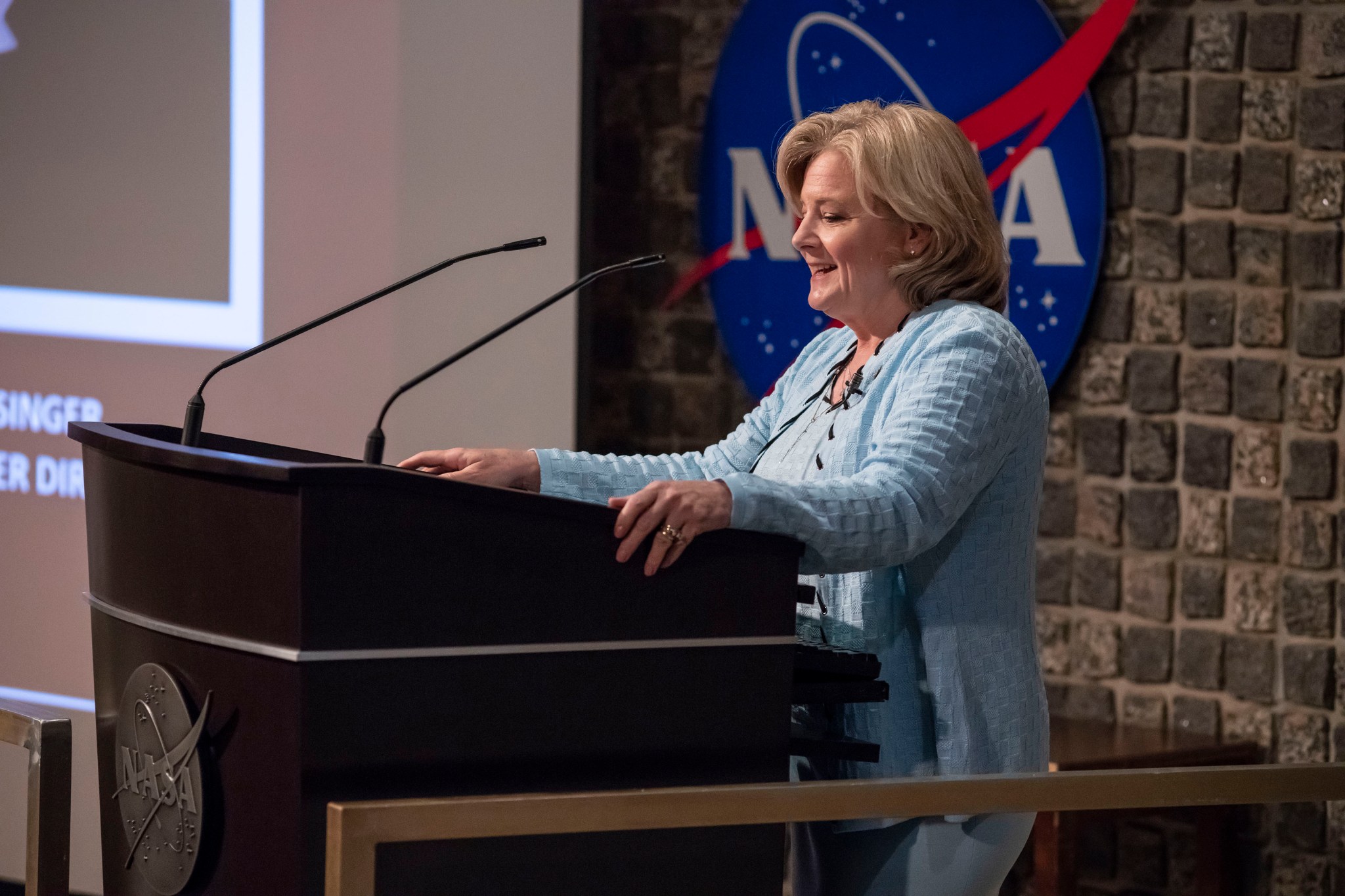
NASA Marshall Space Flight Center Director Jody Singer answers questions from the workforce during a May 14 all hands meeting. She followed Administrator Jim Bridenstine’s agency town hall, where he discussed the proposed fiscal year 2020 budget and how NASA will use new resources to land the first American woman and next American man at the South Pole of the Moon by 2024. “This is a great opportunity for NASA. This budget is positive reinforcement for the work that we do,” said Singer. “It enables us to go forward with putting boots on the Moon by 2024 and the ability to have a sustained process. With an additional $651 million for the Space Launch System and Orion, it also shows the support and importance of being able to deliver on SLS.” (NASA/Marshall/Fred Deaton)
NASA Leaders Visit Louisiana State Capital, Share Moon 2024 Charge
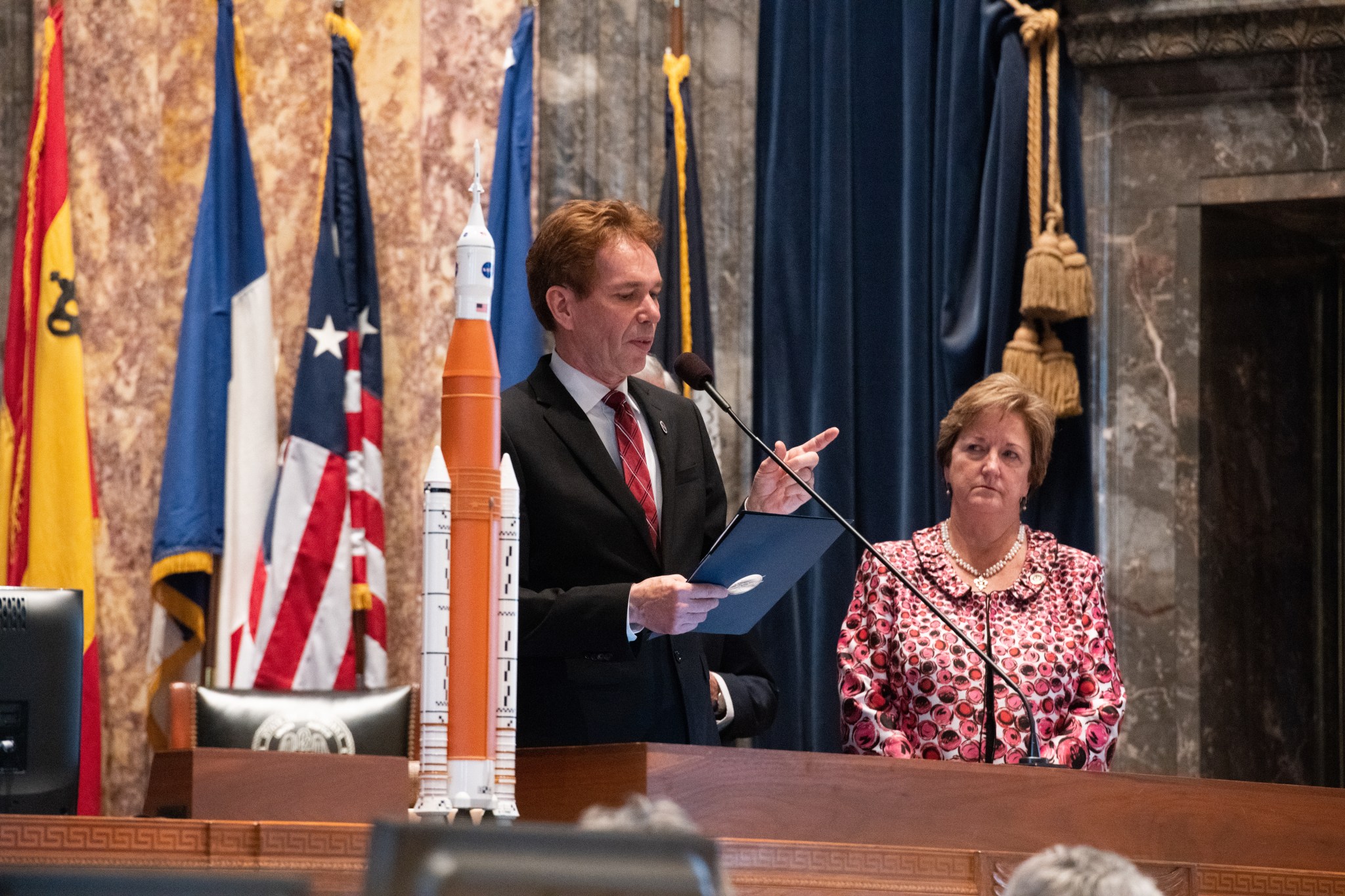
Paul McConnaughey, deputy director of NASA’s Marshall Space Flight Center, left, addresses members of the Louisiana State Senate alongside state Sen. Sharon Hewitt during NASA Day in Baton Rouge on May 8. Leaders from Marshall and NASA’s Michoud Assembly Facility met with state elected officials, and NASA was honored by the Louisiana Legislature with resolutions and proclamations recognizing the agency’s achievements. NASA representatives were also on hand with NASA exhibits at the capitol rotunda. The exhibits were open to the public to give them an opportunity to learn about the work underway on the Space Launch System (SLS) and NASA’s plans to return to the Moon in 2024. (NASA/Jude Guidry)
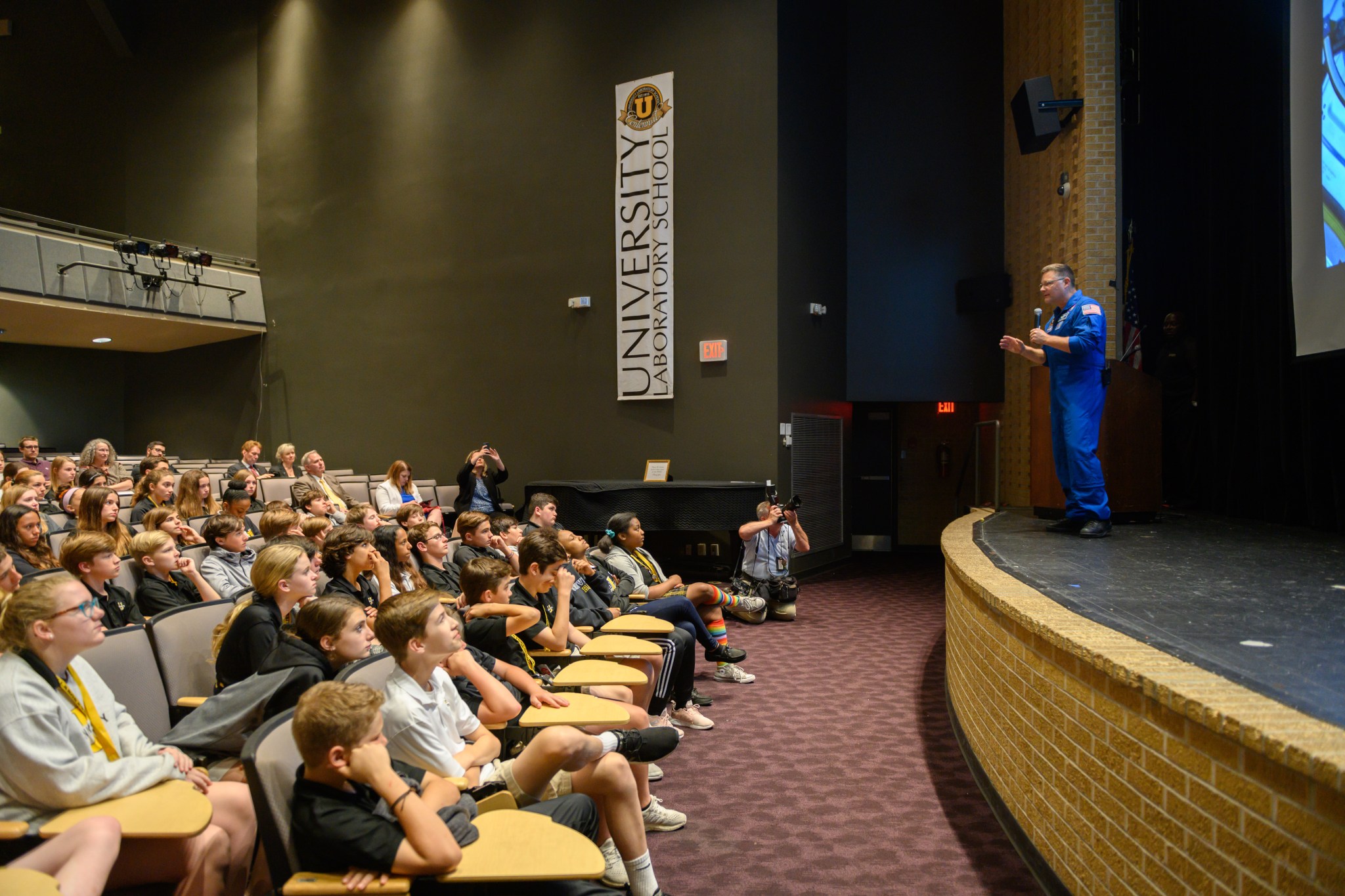
NASA astronaut Douglas Wheelock, participating in NASA Day in Baton Rouge, speaks to students from Louisiana Laboratory School about their becoming the next generation of space explorers. Leaders from Marshall, Michoud and NASA’s Stennis Space Center engaged with Baton Rouge students in science, technology, engineering and math activities. They also visited Southern University Laboratory School in where they built model rockets with students, conducted cryogenic demonstrations and shared career experiences. (NASA/Eric Bordelon)
Insulation Applied to Final Booster Segment for Second SLS Flight
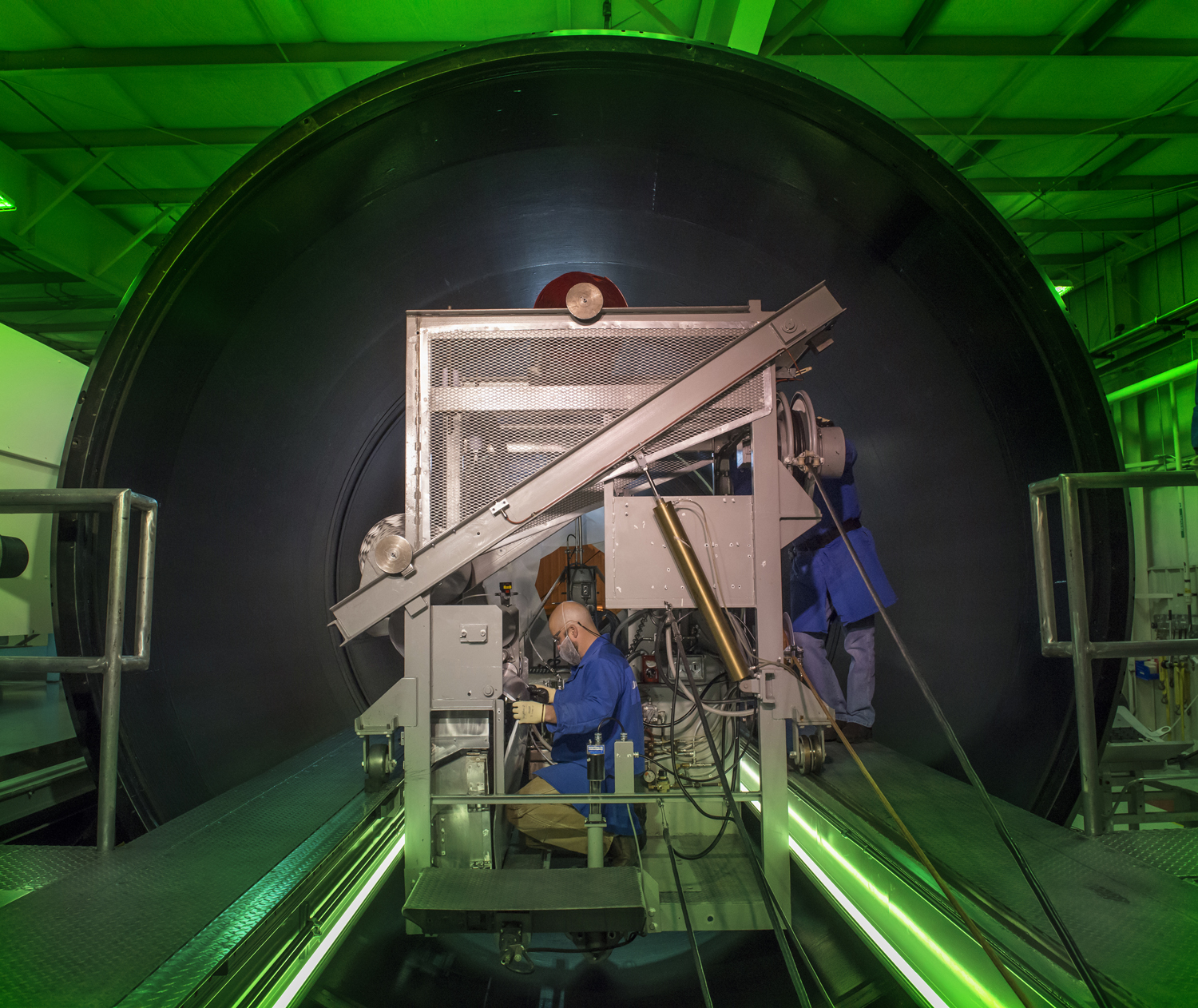
NASA is charged to get American astronauts to the surface of the Moon by 2024. SLS and the Orion are our backbone for deep space exploration. SLS and Orion will launch from NASA’s Kennedy Space Center in Florida on missions to the Gateway in lunar orbit. NASA is targeting 2022 to test SLS with astronauts aboard the Orion spacecraft. Credits: Northrop Grumman Photo
NASA and Northrop Grumman technicians in Promontory, Utah, have applied insulation to the final booster motor segment for the second flight of NASA’s deep space rocket, the Space Launch System, and NASA’s Orion spacecraft. The insulation, applied to the interior of each steel motor segment, protects the casing from heat generated by propellant during launch and flight. SLS uses both liquid and solid propellant to provide the thrust needed to launch the vehicle and send it to space. The twin, five-segment solid rocket motor boosters for SLS are the largest, most powerful solid propellant boosters ever built. Five motor segments are stacked together to create a single, very large motor for each booster. The manufacture and checkout of all 10 motor segments for the first integrated test flight of SLS and Orion were completed earlier this year. (Northrop Grumman)
Shrinking Moon May Be Generating Moonquakes
The Moon is shrinking as its interior cools, getting more than about 150 feet skinnier over the last several hundred million years. Just as a grape wrinkles when it shrinks down to a raisin, the Moon gets wrinkles as it shrinks. Unlike the flexible skin on a grape, the Moon’s surface crust is brittle, so it breaks as the Moon shrinks, forming “thrust faults” where one section of crust is pushed up over a neighboring part.
These fault scarps resemble small stair-step-shaped cliffs when seen from the lunar surface, typically tens of yards high and extending for a few miles. NASA astronauts Eugene Cernan and Harrison Schmitt had to zig-zag their lunar rover up and over the cliff face of the Lee-Lincoln fault scarp during the Apollo 17 mission that landed in the Taurus-Littrow valley in 1972.
“As NASA prepares to send the first woman and next man to the Moon by 2024, it’s really important for us to understand whether these faults are still active today,” said Renee Weber, chief of the Heliophysics and Planetary Science Branch at NASA’s Marshall Space Flight Center. “Our analysis shows that some of them possibly are.”
Weber and co-author Ian Howley of Marshall’s Payload and Mission Operations Division contributed to a study published May 13 in Nature Geoscience that analyzed data from four seismometers placed on the Moon by the Apollo astronauts. They used an algorithm, or mathematical program, developed to pinpoint quakes detected by a sparse seismic network. The algorithm gave the study team a more robust estimate of moonquake locations.
Astronauts placed the instruments on the lunar surface during the Apollo 11, 12, 14, 15 and 16 missions. The Apollo 11 seismometer operated only for three weeks, but the four remaining recorded 28 shallow moonquakes – the type expected to be produced by these faults – from 1969 to 1977. The quakes ranged from body-wave magnitudes of about 2 to around 5, which is large enough to cause potentially damaging shaking.
Using the revised location estimates from the new algorithm, the team found that eight of the 28 shallow quakes were within 18.6 miles of faults visible in lunar images. Additionally, the new analysis found that six of the eight quakes happened when the Moon was at or near its apogee, the farthest point from Earth in its orbit. This is where additional tidal stress from Earth’s gravity causes a peak in the total stress, making slip-events along these faults more likely.
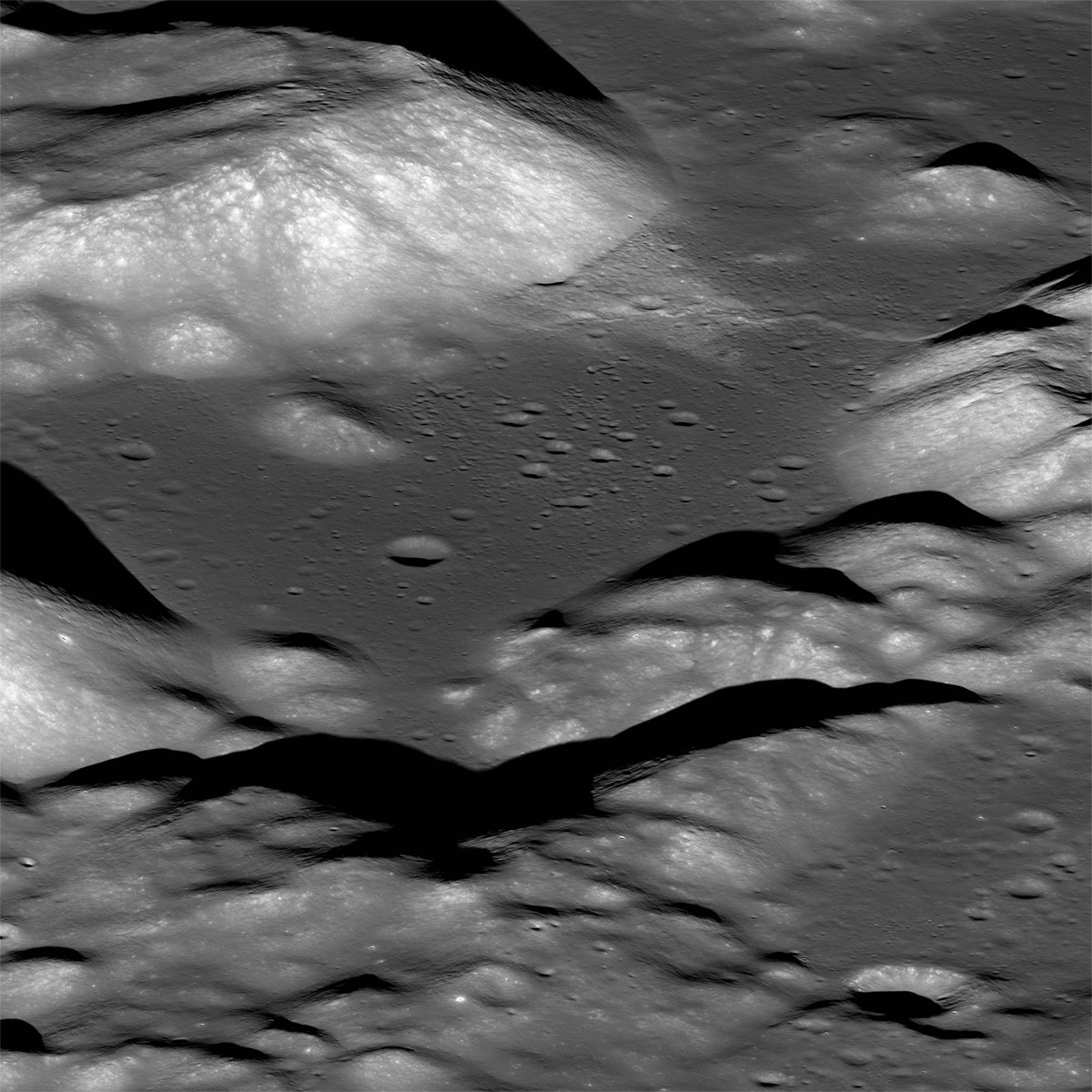
Other evidence that these faults are active comes from highly detailed images of the Moon by NASA’s Lunar Reconnaissance Orbiter spacecraft, which has imaged over 3,500 of the fault scarps. Some of these images show landslides or boulders at the bottom of relatively bright patches on the slopes of fault scarps or nearby terrain. Weathering from solar and space radiation gradually darkens material on the lunar surface, so brighter areas indicate regions that are freshly exposed to space, as expected if a recent moonquake sent material sliding down a cliff. Other LRO fault images show tracks from boulder falls, which would be expected if the fault slipped and the resulting quake sent boulders rolling down the cliff slope.
“LRO has been photographing the lunar surface since 2009, producing an abundance of data that helps us gain knowledge of the Moon,” said Kevin Sykes, LRO mission manager at Marshall. “Going forward, the future of LRO is bright as it will continue to be an essential tool used to help missions study and plan for their lunar visits.”
“Establishing a new network of seismometers on the lunar surface should be a priority for human exploration of the Moon, both to learn more about the Moon’s interior and to determine how much of a hazard moonquakes present,” said Weber.
Learn more about the study here.
Steve Shih, NASA’s Head of Diversity and Equal Opportunity, Speaks to Federal Asian Pacific American Council Training Program in Huntsville

Steve Shih, NASA associate administrator for Diversity and Equal Opportunity, speaks at the opening of the 2019 Federal Asian Pacific American Council’s annual National Leadership Training Program May 14 at the Von Braun Center in Huntsville. Shih told attendees, “During the FAPAC training program this week and throughout your career, I encourage each of you cherish opportunities to continue acquiring a diversity of experiences, knowledge and skills so you can be at your best as a well-rounded leader and a public servant.” He encouraged those in the training “to strive to provide the leadership to equitably and inclusively empower the diversity of organizations and individuals to achieve greater success, engaging and uniting others to accomplish their most important missions.” The three-day event, which ends May 16, features speakers, workshops and training opportunities, with the goal of collaboration, engagement and increasing representation of Asian Americans and Pacific Islanders at all levels of government. (NASA/MSFC/Emmett Givens)
Marshall to Celebrate Apollo 50th Anniversary with Employee Event, Downtown Exhibits
By Will Bryan
On July 16, NASA’s Marshall Space Flight Center and the Marshall Exchange will celebrate the 50th anniversary of the historic Apollo 11 mission with “Summer Blast: The Apollo Edition,” celebrating Marshall’s contributions to the Apollo program.
The free event – open to all NASA employees, contractors and their families – will feature a variety of food, exhibits and activities for all ages, including live music, inflatables for kids, a balloon artist and even a moonwalking contest. Beer and wine will be available for purchase.
Held from 2 to 5:30 p.m. at the walking trails behind the Wellness Center, Building 4315 on Digney Road, the event will feature opportunities to reflect on past, present and future NASA missions. In the event of bad weather, Summer Blast will be held in the Activities Building 4316.
On the evening of July 19, the eve of the first Moon landing, Marshall will partner with Downtown Huntsville Inc. for the free, community-wide “Dancing in the Streets” event, to be held 5-9 p.m. on the Huntsville Courthouse Square. Each side of the square will feature NASA exhibits highlighting different eras of space exploration – Apollo, the space shuttle, International Space Station and the Space Launch System. Each side will also feature live music and dancing from the respective era, while food and refreshments will be available for purchase from local vendors.
The event is inspired by a quote from the first Marshall center director, Wernher von Braun: “My friends there was dancing here in the streets of Huntsville when our first satellite orbited the Earth. And there was dancing again when the first Americans landed on the Moon. I’d like to ask you, don’t hang up your dancing slippers.”
The sponsoring Marshall Exchange is a non-appropriated-fund activity that aims to contribute to the welfare, efficiency and morale of Marshall team members, other government personnel, retired NASA employees and their families.
More information about activities and events during the celebration week will be updated here on ExplorNet.
Bryan, an ASRC Federal/Analytical Services employee, supports the Office of Strategic Analysis & Communications.
Study Finds New Wrinkles on Earth’s Moon
Scientists have discovered wrinkle ridges in a region of the Moon called Mare Frigoris. These ridges add to evidence that the Moon has an actively changing surface. This image was taken by NASA’s Lunar Reconnaissance Orbiter, a project managed by Goddard Space Flight Center. The LRO project is part of the Discovery Program, managed by Marshall Space Flight Center on behalf of NASA’s Science Mission Directorate. Learn more about the study here. (NASA)
This Week in NASA History: Mississippi Test Facility Acceptance Fires S-IC-4 – May 16, 1967

This week in 1967, the first stage of the Apollo 9 Saturn V rocket, S-IC-4, was acceptance fired at Mississippi Test Facility – now known as NASA Stennis Space Center. This was the first flight S-IC to be tested at Mississippi Test Facility. The S-IC stage of the Saturn V was powered by five F-1 engines, each producing 1.5 million pounds of thrust. Here, the S-IC-5, employed on the Apollo 10 mission, is tested at Mississippi Test Facility. The Saturn V was designed at NASA’s Marshall Space Flight Center. Now through December 2022, NASA will mark the 50th anniversary of the Apollo Program that landed a dozen astronauts on the Moon between July 1969 and December 1972, and the first U.S. crewed mission – Apollo 8 – that circumnavigated the Moon in December 1968. The NASA History Program is responsible for generating, disseminating and preserving NASA’s remarkable history and providing a comprehensive understanding of the institutional, cultural, social, political, economic, technological and scientific aspects of NASA’s activities in aeronautics and space. For more pictures like this one and to connect to NASA’s history, visit the Marshall History Program’s webpage. (NASA)



























